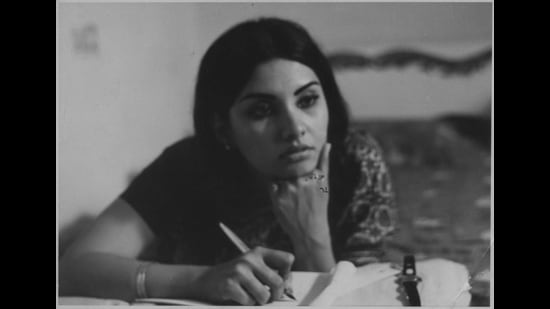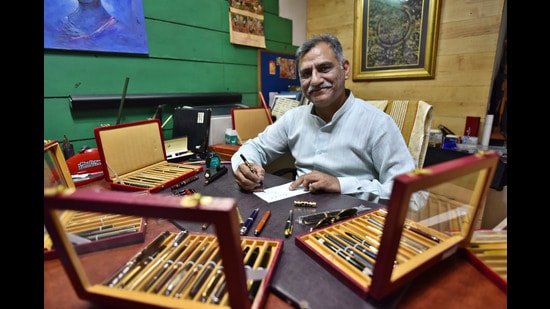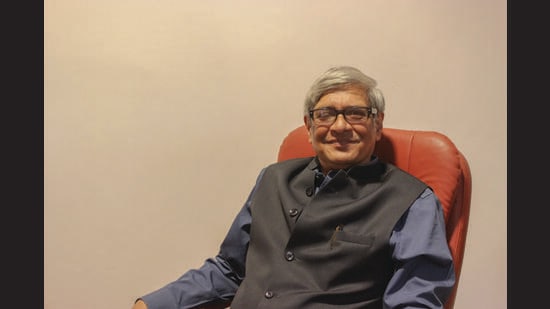Review: Inked in India; Fountain Pens and A Story of Make and Unmake by Bibek Debroy and Sovan Roy
Inked in India documents the history of the fountain pen, nib and ink manufacturers in the country and looks at why the industry floundered after Independence
Two years ago, I posted a photo of my new, India-made fountain pen on social media. One comment on the thread expressed polite surprise that fountain pens are made even today. Well, they are niche products, inconvenient and costly, and so indulgently delightful to use. This pleasure is what hooks hobbyists and reels them in, as is the feeling of possessing something beautiful and utterly impractical. Many, I suspect most, folks go from fountain pen users to collectors faster than you can say Mont Blanc.


This book is for a larger audience. You find much value in Inked in India, and also a fair bit to quibble about. There’s much to praise: the pioneers of the Indian fountain pen industry are highlighted, for one. Briefly, we are introduced to Radhika Nath Saha, a medical doctor and pioneering maker of fountain pens in India, maybe the first. In 1901, his factory in Banaras developed the “first (Indian-made) prototype for fountain and stylo pens”; the maker was “Nilmony Karmakar, a mechanic from Chandernagore (now Chandannagar)”. We are told of manufacturer FN Gooptu. The book moves on to a broad survey of Indian fountain pen, nib and ink manufacturers from 1886 to 1977. Makers of fountain pen-friendly paper aren’t mentioned, which is understandable. In the fountain pen’s heyday, since ballpoints hadn’t yet reared their irritating heads, every paper by each maker would be fit for use with fountain pens. So, mentioning paper manufacturers would have made the book very fat – making it the first title to come bound in a small goods carrier vehicle. This sleuthing out of the forgotten past must have taken patient wading through reams of records and books by the heap.

No wonder Inked in India is billed as the “first-ever documentation of all known fountain pen, nib and ink manufacturers in the country”. Extinct and current-day manufacturers are named and described, some in detail. I found a couple of present-day makers I hadn’t previously known of, and bought one of their pens.
The book might sound like a roll call of manufacturers. It’s not. It is studded with anecdotes from history and savoury factoids. For instance, we are told how FN Gooptu’s pens, being swadeshi, won the admiration of MK Gandhi, who was used to reed pens. We are also told how Gandhi eventually acquired “at least one fountain pen”, which was made by Ratnam Fountain Pen Works, Rajahmundry. (If you’re interested, Ratnam-brand pens are made today, and are sold online.) We are told of young Jawaharlal Nehru’s run-in with his father over the use of his father’s fountain pen. And Dr BR Ambedkar’s passion for these pens is highlighted: he was “especially fond of Parker, Sheaffer, and Waterman pens”. (All three manufacturers still exist; Sheaffer and Waterman pens are eye-wateringly costly, and purchasing a flagship Parker today would need you to take a modest personal loan.) We are also told how “[I]t is often stated that (an Indian-made) Wilson pen was used to write the Constitution… The actual Constitution was written by Prem Behari Narain Raizada (Saxena), who... used 432 nibs of the No 303 variety”. Anecdotes like this enliven the narrative.
READ MORE: Essay – On having a passion for fountain pens
Inked in India also carries good photographs of vintage fountain pens by Indian makers. Even now, many Indian fountain pen makers turn their pens by hand on lathe. This artisanal quality, perhaps, makes their pens distinctive as well as attractive to hobbyists abroad. The photos are a callback to the past, evocatively poignant.
If you opened Inked in India hoping for a nostalgic celebration of the country’s fountain pen and ink industry, or reviews of past and present pens, you’ll be surprised. This is a critique of policy which, say the authors, snipped the Indian nib. The “license permit” regime which closed the Indian economy to international trade in order to support local industries, is critiqued at length in this book. Copious research and analysis is brought to bear, along with a recap how policies evolved after Independence. So much so that the corpse of pre-Liberalisation policy is exhumed from its leaf-blown, forgotten tomb, carted out in mummified state, and handed its verdict in its lifeless hands before receiving the guillotine, matter-of-factly, without shouting.

An audit of the policy analysis in the book or its core assertion is outside my domain of expertise. And no one would support a return to the days of months-long waitlists to get a phone connection. But when the authors say the license permit regime sank “make in India” (the M is not capitalised) for the fountain pen industry, it seems reasonable to point out that the term is of the present day, is politically charged, and is not a synonym for swadeshi. Would “make in India”, a term applied to the past, fit the radically different circumstances and policy frameworks of the policy of yesteryear?
LISTEN: Books and Authors podcast with Bibek Debroy, author, Inked in India
Prior to Independence, we are told, imported and swadeshi pens coexisted; it is mentioned that Indian makes had quality issues. It is a significant point, and a detailed enquiry into reasons why would have been good.
And if ballpoints emerged in India in the Sixties, how many nails did they hammer into the fountain pen’s coffin? Admittedly a lay reader of market histories and policy, I found it curious that only fleeting references are made of the ballpoint, which is cheap, reliable, doesn’t leak usually, isn’t messy to refill, and is sturdy, convenient to use, and can be produced in vast numbers. Perhaps the disruption caused by the ballpoint also merited a detailed look?
Suhit Bombaywala’s factual and imaginative writing appears in India and abroad. He tweets @suhitkelkar.





